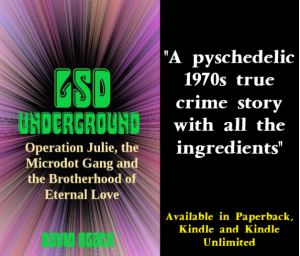CLR James, Cornelius Castoriadis, Guy Debord, Raya Dunayevskaya
By David Black
1 September 2024
1. CLR James

[Grace Lee Boggs, CLR James, Raya Dunayevskaya]
CLR James was born in Trinidad in 1901 and died in London in 1989. In 1932 James left Trinidad and sailed to England to help cricketer Learie Constantine write his autobiography. After working for the Manchester Guardian as a cricket correspondent, James moved to London. He took part in the Pan-African movement, the Independent Labour Party and got involved in Trotskyist politics. James had several books published, including, in 1936, the highly-acclaimed Black Jacobins, the history of Toussaint Louverture and the Slave Revolt of 1791 in the French Caribbean. The first and only successful slave revolt in history, it led to the abolition of slavery by the French revolutionaries in 1794. In 1802, however, slavery was reinstated by Napoleon. Toussaint was betrayed by his comrades and delivered to the Napoleonic regime to die in a French prison in 1803. Toussaint’s historical legacy is that he raised the important question: “are the universal human rights coming out of the Enlightenment and French Revolution truly universal?” – or, just white, male and European?
In early 1939 CLR James relocated to the USA and travelled to visit Trotsky in Mexico. Following the Stalin-Hitler Pact in 1939, Trotsky’s designation of the USSR as a degenerated workers’ state was disputed within the movement. Max Shachtman argued that it was bureaucratic-collectivist. By 1940 James had decided it was state-capitalist. Raya Dunayevskaya (1910-87), formerly Trotsky’s Russian language secretary in Mexico, came up with the same analysis as James, separately but at exactly the same time. Together they founded the Johnson-Forest Tendency within the US Workers Party, which had split from the Socialist Workers Party (US section of the Fourth International) months before Trotsky’s assassination (Joe Johnson was CLR James; Freddie Forest was Raya Dunayevskaya; the third leader of the tendency was Grace Lee – later Grace Lee Boggs, 1915-2015).
In 1947 the JFT rejoined the Socialist Workers Party moved to Detroit, partly because it had become the biggest and most multi-ethnic industrial city of the world, and partly to distance themselves from “petty-bourgeois opportunism” of the intellectuals and the Workers Party leaders in New York. The JFT’s four years in the SWP seems to have consolidated their base amongst miners and auto-workers, but as far as the SWP membership a whole went, their efforts seem to have been a debilitating waste of time. This unhappy relationship ended in 1951. The JFT left the SWP and founded the journal, Correspondence, in Detroit.
Just how far James and his comrades had moved from Trotskyism is evident from the correspondence between the leaders about things well beyond the ken or interest of the unhappy SWP. In 1948 James wrote Notes on Dialectics, a study of Hegel’s Science of Logic. This was a 250 page mimeographed document for internal discussion within the Johnson-Forest Tendency (it was eventually published in book form in Britain in 1980).
Hegel begins his 900-page masterpiece with the movement of philosophical categories: Being, Nothing and Becoming. In James’ interpretation if you determine that you and your experiences are something (like in “I think, therefore I am”), you are also determining that you and your experiences are not something else. Hegel’s Logic tells us – as an inescapable fact of life – that we come from nothing, but we are always trying to become something. This is true for us as individuals, from the day we are born; true for the development of philosophical Logic itself from the Ancient Greeks to the Enlightenment; and true for historical movements. Marx argues that the proletariat is revolutionary or it is nothing; and by negating capitalism it negates itself. It is this historical movement of the proletariat that James is primarily concerned with.
Greek democracy, forgotten under the Roman Empire and feudalism, returns at a new and higher level with the English Revolution of the 17th century. It is defeated, but it comes back: first with the American Revolution of 1776, then with the French Revolution of 1789. The French Revolution also gives birth to the idea of communism (Marx was quick to point that out that it was not he or Enge;s who invented it).
James brilliantly uses Hegel’s argument against Kantianism to expose the fixed determinations and categories of Trotskyism in its failure to understand the class nature of the USSR. The Johnson-Forest group argued that what made Stalinism in 1939 different to the 2nd International betrayers of 1914 could only be grasped by grounding the category of state-capitalism in the dialectic of Labour and Capital, as set out in the categories of Marx’s Capital. No wonder, James said, all of Trotsky’s predictions for World War turned out wrong. On the “Hegelian” aspect of Lenin’s State and Revolution James saw that Lenin propounded a new universal in calling for population “to a man” to run production and the state. As Hegel puts it, no doubt with the French Revolution in mind:
“When external actuality is altered by the activity of the objective notion and its determination therewith sublated, by that very fact the merely phenomenal reality, the external determinability and worthlessness, are removed from that actuality.”
In Hegel’s terms the “objective notion” becomes the General Will that the potential of revolutionary change is actually more real than “the merely phenomenal”. “The fact IS, BEFORE it exists.”
The point CLR James makes in 1948 is that both social democracy and the communist parties had become deadly enemies of the proletariat, because they were both representations of capital. Social democracy represented a section of the proletariat – the skilled workers – who had been incorporated by monopoly capital; stalinism represented the petite bourgeois, technocratic new class of state capitalism. So, James argues that with the millions of workers organised into unions by European Stalinist parties (or, as in England and America, social democrats), there was nothing left to organise. James therefore counterposes spontaneous class struggle to organisation. The historic task of the workers movement had become how to negate the vanguard party. Spontaneous conscious actions by the masses, already organised in fighting form in their workplaces, would spill over into the surrounding communities and negate all the abstract universals that previous revolutions had thrown up.
After leaving the SWP, the Johnson-Forest Tendency published the journal, Correspondence, in Detroit, but in 1955 Raya Dunayevskaya and Black auto-worker, Charles Denby, broke away to found News and Letters and work on Dunayevskaya’s forthcoming book, Marxism and Freedom.
1958 saw the publication of the pamphlet, Facing Reality: The New Society and How to Bring it Closer, by CLR James and Grace Lee Boggs, with an introduction by Cornelius Castoriadis of the French group, Socialisme ou Barbarie group (see next post). Facing Reality threw out any concept of organized mediation in the world of class struggle:
“the organization will not seek to propagate it [socialism], nor to convince men of it, but to use it so as the more quickly and clearly to recognize how it is concretely expressed in the lives and struggles of the people.” Believing socialism to be “inherent in the masses,” the only role left for revolutionaries was to tell anyone who didn’t know it that this was so.
This perspective raised the question of the organisation’s “historic right” to exist. What was it?
2. Cornelius Castoriadis

[(Cornelius Castoriadis, Claude Lefort]
In 1960 Guy Debord joined Socialisme ou Barbarie, while retaining membership of the Situationist International, and remained a member for one year.[i]
Debord argued that the academic specialists had abandoned the “critical truth” of their disciplines to preserve their ideological function. And as, he believed, “real people” were going to come together to challenge the capitalist order, all “real researches” were “converging toward a totality.”[ii] These “real researches” could be found in “militant publications like Socialisme ou Barbarie in Paris and Correspondence in Detroit,” both of which had broken with Trotskyist vanguardism. Both groups had published “well-documented articles on workers’ continued resistance” to “the whole organization of work” and to their depoliticization and disaffection from unions which had become “a mechanism for integrating workers into the society as a supplementary weapon in the economic arsenal of bureaucratized capitalism.”[iii]
Socialisme ou Barbarie, published from 1949 to 1965, was founded by Cornelius Castoriadis and Claude Lefort. Correspondence, published from 1951 to 1962. In 1958, Castoriadis, using the pseudonym, “Pierre Chaulieu,” contributed to the book, Facing Reality, alongside James and Grace Lee Boggs.[iv]
Castoriadis (1922-97) analyzed the implications for radical politics of developments in post-War capitalism. The “crisis” and “immiseration” predicted by “traditional” Marxism now appeared to have been forestalled. With full unemployment and an increasingly affluent workforce, Castoriadis saw the remaining contradictions of the system as the “alienation” of the worker from work and the division between management and the managed (significantly Castoriadis did not, as did Marx, conceptualize the division as between mental and manual labor).
Since Socialisme ou Barbarie believed that workers’ councils would be the organs for transition to a socialist society, there was a reassessment of the earlier “council communism” which had appeared during the German Revolution of 1918-19 and its aftermath. In 1952, the veteran Dutch council communist and astronomer, Anton Pannekoek (1873-1960), wrote to Castoriadis on the issue of workers’ councils and the “revolutionary party”: “While you limit the activity of these councils to the organization of work in the factories after the seizure of power by the workers, we consider them equally as being the means by which the workers will conquer this power.”[v]
Whereas Pannekoek held that the workers would decide for themselves on the organization of the new society once the power of the workers’ councils had been established, Castoriadis had drawn up a veritable blueprint for a new “system” of workers’ councils, with elections at the shop-floor level for a government of councils and a central assembly which would oversee a “planning factory” for coordinating and managing the economy at the national level.[vi]
This looked to Pannakoek like the party-building he was sceptical of. Pannekoek argued that for councilists to retain even the concept of a party – even a non-vanguardist party – was a “knotty contradiction.” Castoriadis, for his part, did not see the role of the revolutionary organization as constituting an external leadership to the working class. He believed revolutionary organization would be necessary to thwart the efforts of “Leninist” parties to “take-over” the autonomous bodies that would be set up by the workers. Castoriadis saw Socialisme ou Barbarie as building the revolutionary organization of the “avant-garde” minority of workers and intellectuals, whose role in the short term would be to protect the immediate interests of the workers. Although this organization would have to be “universal, minority, selective and centralized” -to such an extent that it could be perceived as Leninist – he believed that it could avoid degeneration into a bureaucracy because it would not repeat the fundamental division of management and managed, which the vanguard parties reflected in their theory and practice. The journal carried reports from workers describing the monotony and alienation they felt in their jobs, frequently expressing the view that they, the workers, could self-manage their workplaces much more efficiently and creatively than the existing managers.[vii]
The advent of the Hungarian workers’ councils in the Revolution of 1956 was seen by Castoriadis as an epoch-making anti-capitalist development. Mistakenly, however, he saw Soviet “bureaucratic state-capitalism,” with its highly integrated and centralized bureaucracy, as the “highest” stage of capitalism, and therefore ahead of its Western rivals in the domination of labor by capital – not to mention its ideological hold over workers’ organizations in the West. This position implied that successful revolution might be even more likely in the West, because of the contested democratic space that still existed in bourgeois democracies.
However, the events in Hungary did not develop the revolutionary tendencies of the French working class; rather they just eroded the authority and hegemony of the French Communist Party. The vote in the referendum of 1958 for De Gaulle’s Fifth Republic – ninety per cent in favor – shattered Castoriadis’ faith in the working class as a revolutionary force and led to a significant shift in Socialisme ou Barbarie towards covering struggles against alienation in the “superstructure” – especially in culture and education.[viii] But for the moment, the “industrial” work continued. In 1959 the journal Pouvoir Ouvrier was founded by Socialisme ou Barbarie to propagate the program for workers’ self-management based on the theories of Castoriadis, as well as to publish reports from workers on the shop floor. But the “knotty contradiction” of party-and-class identified by Pannekoek soon manifested itself. Claude Lefort (1924-2010) broke from the group in 1958 over what he saw as “a permanent contradiction between the theoretical character of the journal and its propagandistic claims.” In Lefort’s view, which was shared by Henri Simon (born 1922), Castoriadis’ position concealed a “radical fiction” posing as a conception of non-bureaucratic socialism, which in turn concealed both a “communitarian” desire for homogeneity and the inevitability of articulation by a small circle of intellectuals.[ix]
Another issue was raised by Raya Dunayevskaya in 1955. She admired the input of reports by workers in the journal:
“Heretofore socialists and other radicals have been content with publishing a paper ‘for’ workers rather than by them. The fact that some now pose the latter question, and pose it with the seriousness characteristic of the theoretical journal, is a beginning.”
She added however, that to say, “A workers’ paper, yes, but in that case it must come from the workers themselves, and not from us the theoreticians,” was an evasion of the task at hand: “theoreticians cannot be bystanders to a paper that mirrors the workers’ thoughts and activities as they happen.”[x] In 1961, Eugene Gogol of Dunayevskaya’s News and Letters Committees attended a Socialisme ou Barbarie conference in France as an observer and engaged with Castoriadis in discussion of Marx’s 1844 Philosophic Notebooks, the first English translation of which had been published in Dunayevskaya’s book Marxism and Freedom in 1958 as an appendix. Castoriadis argued that Marx’s 1844 writings had “no bearing on Marxian thought after Marx because they were not published until 1920,” and that their philosophic nature made them irrelevant to the question of alienation in modern production.[xi]
After Debord broke from Castoriadis in 1961, the journal International Situationist warned that Socialisme ou Barbarie ran the risk of “providing an ideological cover for a harmonization of the present production system in the direction of greater efficiency and profitability without at all having called in question the experience of this production or the necessity of this kind of life.”[xii] A few issues later (in 1963), the critique continued:
these groups, rightly opposing the increasingly thorough reification of human labor and its modern corollary, the passive consumption of a leisure activity manipulated by the ruling class, often end up unconsciously harboring a sort of nostalgia for earlier forms of work, for the truly ‘human’ relationships that were able to flourish in the societies of the past or even during the less developed phases of industrial society. As it happens, this attitude fits in quite well with the system’s efforts to obtain a higher yield from existing production by doing away with both the waste and the inhumanity that characterize modern industry.[xiii]
In Socialisme ou Barbarie’s first manifesto of 1949, Castoriadis had insisted that Marxism was “beyond question.” But in the course of the 1950s he developed the view that Marxism was the ideology of an earlier, “market” and “production” stage of capitalism, and that in the modern bureaucratic world, Marx’s Capital, for the most part, was no longer relevant. Castoriadis argued that, with the aid of the state, continual expansion of capitalism could take place unimpeded. In the age of state-capitalism and bureaucracy, a new “ideology” was necessary for the new movement towards a system of workers-self management. Castoriadis himself concluded that Marxism was a “pseudo-scientific” “obfuscation” of nineteenth-century class struggles, which had themselves “allowed the system to function and survive.”[xiv]
By the late 1960s the Situationists were attacking what they saw as Castoriadis’ “unmistakable progress towards revolutionary nothingness, his swallowing of every kind of academic fashion and his ending up becoming indistinguishable from any ordinary sociologist.”[xv]
3. Guy Debord
Anselm Jappe, in his book, Guy Debord, argues that, “Debord’s theory is in essence the continuation of the work of Marx and Hegel and that its importance inheres for the most part precisely in this fact” [emphasis in the original].
According to Hegel, the application of abstract principles in law and economics was a further negation of the organic unity of life he saw as having once existed in Greek Antiquity. The unity of subject and object expressed in the art of Greek Antiquity had become impossible for a society in which, according to Hegel, the “lower world” of economic nature (once vested in the “family” or “household”) promoted a “bestial contempt for all higher values.” All sense of the divine had been tossed into the world of “superstition” and “entertainment,”[i] the temple reduced to “logs and stones” and “the sacred grove to mere timber.”[ii]
What then was left for art? Hegel said that “as regards its highest vocation, art is and remains for us something past. For us it has lost its genuine truth and vitality; it has been displaced into the realm of ideas.”
Hegel did not doubt that works of art would continue to be produced and that artists would strive for perfection with new imaginative techniques. In modernity. however, what is aroused in us by art beyond immediate enjoyment is “the judgment that submits the content and medium of representation of art to reflective consideration… For this reason, the science of art is a far more important requirement in our own age than it was in earlier times when art simply as art could provide complete satisfaction.”[iii]
In 1967, Guy Debord wrote in the Society of the Spectacle that the defeat of the social revolutions following the First World War had left the Surrealists and the Dadaists “imprisoned in the same artistic field whose decrepitude they had denounced.” Furthermore, Surrealism had mistakenly put itself “au service” of a revolution in Russia which had already been lost. Whereas “Dadaism had tried to repress art without realising it; Surrealism wanted to realise art without suppressing it.” What was necessary, in Debord’s view, was to project suppression and realization as “inseparable aspects of a single supersession of art.”[iv]

[Top: Jacques-Louis David. Below Rene Magritte]
In July 1957, at a conference in Cosio d’Arroscia, Italy, the Situationist International was founded. Those attending were: from France, Guy Debord and Michèle Bernstein of the Letterist International; from England, the painter Ralph Rumney; from Denmark, the painter Asger Jorn; and from Italy, Guiseppe Pinot Gallizio, the formulator of “industrial painting,” Walter Olmo, experimental musician, and Piero Simondo and Elena Verrone of the International Movement for an Imaginist Bauhaus.
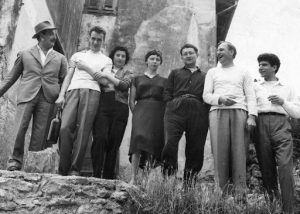
Debord argued in his Report on the Construction of Situations and the Prerequisites for the Organization and Action of the International Situationist Tendency that “the problems of cultural creation can now be solved only in conjunction with a new advance in world revolution.” In order to combat the passive consumption that defined spectacular culture, Debord called for the international to organize collectively towards utilizing all of the means of revolutionizing everyday life, “even artistic ones.”
We need to construct new ambiances that will be both the products and the instruments of new forms of behavior. To do this, we must from the beginning make practical use of the everyday processes and cultural forms that now exist, while refusing to acknowledge any inherent value they may claim to have… We should not simply refuse modern culture; we must seize it in order to negate it. No one can claim to be a revolutionary intellectual who does not recognize the cultural revolution we are now facing…[v]
Although any genuinely experimental attitude based on critique and supersession of existing conditions was usable, production of artistic forms was seen as a dead end, leading at best to recuperation and commodification within the spectacle:
It must be understood once and for all that something that is only a personal expression within a framework created by others cannot be termed a creation. Creation is not the arrangement of objects and forms, it is the invention of new laws on such arrangement.[vi]
Debord said in 1961 at Henri Lefebvre’s Group for Research on Everyday Life:
the critique and perpetual re-creation of the totality of everyday life, before being carried out naturally by all people, must be undertaken in the present conditions of oppression in order to destroy these conditions. An avant-garde cultural movement, even one with revolutionary sympathies, cannot accomplish this. Neither can a revolutionary party on the traditional model, even if it accords a large place to criticism of culture… The revolutionary transformation… will mark the end of all unilateral artistic expression stocked in the form of commodities, and at the same time the end of all specialized politics.[vii]
Georg Lukács’ History and Class Consciouness (1923) saw in the reformism of social democracy a retreat from Hegel and Marx to Kant. Before Hegel and the French Revolution, the rationalists had treated objectivity as independent of, and separate from, the thinking subject; and for Kant, the object was knowable only in how it appeared to the subjective mind, not as the thing-in-itself. In Hegel’s concept of totality this duality in the process of knowledge is resolved by eliminating the autonomy of both the objects and their concepts. The power of the totality is expressed in Lukács’ statement that “the chapter in Marx’s Capital dealing with the fetish character of the commodity contains within itself the whole of historical materialism.”[viii] In Capital Marx shows how the value-form which labor assumes depends on the reduction of the concrete labor to abstract labor, which takes place in the production of commodities through the medium of socially necessary labor time.
The Society of the Spectacle argues that the spectacle does not falsify reality merely in an ideological sense, along the lines of the economic base producing false consciousness in the superstructure; nor does the spectacle constitute itself abstractly as a force external to the concrete social activity of individuals. Rather, the spectacle-commodity and reality each transform themselves into their opposites. The spectacle is a real product of that reality; and “real life,” in its subjective passivity, absorbs its own objectified falsification. Their reciprocal alienation is the ground and essence of spectacular capitalism, in which the world is turned upside down:
The spectacle is able to subject human beings to itself because the economy has already totally subjugated them. It is nothing other than the economy developing for itself. It is at once a faithful reflection of the production of things and a distorting objectification of the producers.[ix]
Where then, does this leave proletarian class consciousness? Lukács, in his 1923 essay, ‘Reification and the Consciousness of the Proletariat’, argues that work, as a social-metabolic process, is reified and fragmented in a such a way as to make people incapable of recognizing the world beyond their own particular tasksas being of their own making. People are thus rendered passive and contemplative, no matter how “busy” they are.[x] Against the fragmenting yet totalizing power of the commodity Lukács dialectically juxtaposes the particular commodity that production is based on: labor-power. Since labor-power cannot be separated from the laborer, then any real self-consciousness on the laborer’s part of that relationship can be “ascribed” as revolutionary. Lukács thus postulates a “subject-object identity” constituted by the class that “wakes up” to mass revolutionary consciousness.
Lukács, however, is well aware of the gap between the “ascribed” revolutionary consciousness and the actually existing reformist/false consciousness. Reification, as the “necessary, immediate reality of every person living in capitalist society,” can be overcome only by “constant and constantly renewed efforts to disrupt the reified structure of existence” and by relating the “concretely manifested contradictions” to the totality of development, and becoming conscious of the immanent meanings of these contradictions in their totality.[xi]
Debord, taking up this problem of the passive and contemplative nature of everyday life under capitalism, sees the leisure industry, with its Club Med holidays, mass sports events, television and movies, as much more than mere distraction. In “consumable pseudo-cyclical time” the commodified moments of leisure are explicitly presented as moments in the cyclical return of real life, but all that is really happening is the spectacle reproducing itself at a higher level of intensity: “The moments within cyclical time when members of a community joined together in a luxurious expenditure of life are impossible for a society that lacks both community and luxury.”[xii]
Debord argues that because the spectacle attempts to establish an illusory unity over the fragmentation and separation, any real proletarian subjectivity cannot confine itself to concerns over egalitarian distribution of wealth; it must be total itself. The real social contradiction is between those who are at home in alienation – or at least feel obliged to maintain it – and those who would abolish it. The coming revolution would require a complete break with vanguardism as well as anarcho-councilism.[xiii]
As Debord puts it in Society of the Spectacle, Lukács claimed that the Bolshevik form of organization “was the long sought mediation between theory and practice, in which proletarians are no longer spectators of the events which happen in their organization, but consciously choose and live these events.” The trouble was, “he was actually describing as merits of the Bolshevik party everything that the Bolshevik party was not.”[xiv]
The Situationists’ grasp of the difference between class consciousness in-itself and in-and-for-itself was at the root of their polemical attacks on the bureaucratic practices in the workers’ movement and the fragmented, contemplative ideas of sociologizing intellectuals. Situationist writings suggested that workers could reach revolutionary conclusions among themselves and that the Situationist International saw no responsibility for helping this process along, unless approached by the workers’ councils themselves for assistance.
Debord thought that the French revolt of May/June 1968, soon to be followed by the “Hot Autumn” of Italy in 1969, heralded “the beginning of a new era,”[xv] But he had no intention of building a new political party, either on a national or international basis, that would become, like others past and present, yet another “representation” of the real struggle. The Situationists, as les enfants perdus, had no further missions to fulfill in the organizational form they had upheld for the previous fourteen years, and nowhere to return to. In 1972, after a final round of resignations and expulsions, which left Debord and the Italian, Gianfranco Sanguinetti, as the only two remaining members, the Situationist International was dissolved at Debord’s behest.
Twenty years after the May Events of 1968, in his 1988 Comments on the Society of the Spectacle, Debord identified the dilemma facing the Left well before the fall of the Berlin Wall and the apparent victory of neoliberalism:
the coherence of the society of the spectacle proves revolutionaries right, since it has become clear that one cannot reform the poorest detail without taking the whole thing apart. But, at the same time, this coherence has suppressed every organized revolutionary tendency by suppressing the social terrains where they had more or less expressed themselves: from trade unions to newspapers, towns to books. In the same movement, one has highlighted the incompetence and thoughtlessness of which this tendency was quite naturally the bearer.[xvi]
In 1967, Debord had noted the ever-increasing size of the working class and the impending proletarianization of the entire workforce. But in the Comments of 1988, Debord, as Jappe puts it, “reversed the terms of this proposition”: the conditions of the middle classes had become proletarianized in their separation and lack of power but, as they lacked class consciousness, they had negated the power of the proletariat as a force irreconcilable with capital, by absorbing it. In late-Debord thought, the early-Lukács’ formulation of a structure of reified consciousness evolves into that of the “integrated spectacle.”
Debord’s “pessimistic” Comments of 1988 should be seen in relation to his original theorizing of the spectacle and the forces resisting it. In distancing the Situationists from both the vanguardist and spontaneist positions, the Society of the Spectacle argued the revolution “requires” workers to become dialecticians:
Proletarian revolution depends entirely on the condition that, for the first time, theory as intelligence of human practice be recognized and lived by the masses. It requires workers to become dialecticians and to inscribe their thought into practice. Thus it demands of men without qualification more than the bourgeois revolution demanded of the qualified men which it delegated to carry out its tasks (since the partial ideological consciousness constructed by a part of the bourgeois class was based on the economy, that central part of social life in which this class was already in power). The very development of class society to the stage of spectacular organization of non-life thus leads the revolutionary project to become visibly what it already was essentially.[xvii]
The idea that the organized working class would become “visibly what it already was essentially” bears a similarity to C.L.R. James’ position on the British shop stewards organizations in the 1950s as representing the “future in the present.”[xviii] Debord’s reflections about the importance of theory being lived by the masses and the workers becoming “dialecticians” bears more than a passing resemblance to (if not a subtle détournement of) Dunayevskaya’s portrayal in Marxism and Freedom (1958) of Black civil rights activists, women, rank-and-file workers and youth as a movement from practice which was itself a form of theory, demanding the engagement from intellectuals she saw lacking in Castoriadias:
The task that confronts our age, it appears to this writer, is, first, to recognize that there is a movement from practice — from the actual struggles of the day — to theory; and, second, to work out the method whereby the movement from theory can meet it…. Far from being intellectual abdication, this is the beginning of a new stage of cognition. This new stage in the self-liberation of the intellectual from dogmatism can begin only when, as Hegel put it, the intellectual feels the “compulsion of thought to proceed to… concrete truths.”[xix]
[The above section is an abridged extract from The Philosophical Roots of Anti-Capitalism: Essays on History, Culture and Dialectical Thought by David Black (Lexington 2013)]
4. Raya Dunayevskaya
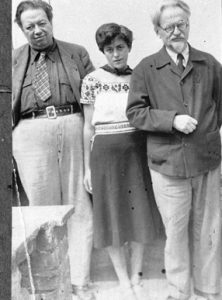
[Diego Rivera, Raya Dunayevskaya, Leon Trotsky]
In 1914 the parties of the Second International were committed to mobilising the international workers movement to prevent war between rival imperialist powers; ,when the Guns of August sounded, socialist and trade union leaders fell into line. When Lenin, then exiled in Geneva, received a telegram telling him that German Social Democracy had voted in the Reichstag for war credits, his first reaction was to dismiss it as a forgery.
Rosa Luxemburg was not so surprised. The “Pope of Marxism”, Karl Kautsky, had long argued that the German working class should subordinate its autonomy to a reformist strategy in which the centralized bureaucracy of the bourgeois state was to be a conciousnesss-forming tool of “progress”. Kautsky, having ruled out the tacticof the Mass Strike, failed to address how the socialists might educate and assimilate those non-proletarian forces that could be won over. In Germany the failure to do so installed the germ of defeat that later led to counter-revolution and the eventual triumph of fascism.
In Luxemburg’s critique of reformism, Gillian Rose in The Broken Middle sees a notion of transcendence: that the proletariat could only exercise its revolutionary will if it went “outside” and “beyond” the existing society. This wasn’t so much utopianism, as the recognition of an “aporia”: a state of being, caught in the schism between theory and practice, which was resistant to a priori logic and determination – as formulated by Kant – even though it lacked any discernable path of transcendence. In Greek Antiquity, Poros, the god of plenty and resourcefulness meets Penia, the child of poverty and powerlessness; and after drinking too much, is seduced by her. Their child is Eros, who inherits the “nature” of both parents, and lives in a state of aporia. The word aporia is the privative of the word porus, which refers to a ford or ferry crossing point in a river. So aporia is an impasse, in which the navigator may be faced with danger and uncertainty of success. In the concrete terms which Rose assigns to Luxemburg, the resolution of the aporia would require the difficult union of the daily struggle and “the great world transformation”. This new movement would have to grope along the path between the revolutionary Scylla of abandoning the mass character of the social democratic party and the reformist Charybdis of abandoning the goal of socialist transformation.
In the 1960s, the anti-Vietnam War movement, which created a whole new generation of radical youth, had its organisational origins in the civil rights movement. In 1970 a young Left activist corresponded with Raya Dunayevskaya (1910-87) on the question of the counterculture: “The movement is now not primarily in the factory; the consciousness is not there nearly so much as in the rock-drug culture.” Dunayevskaya’s reply points out that the workers didn’t respond well to middle-class leftists telling them what they should do – whether agitation for a “general strike now!” or whatever. And the fact that workers were unipressed by leftist arguments – did not necessarily mean they were only concerned with “bread and butter” issues and incapable of transcending trade-union consciousness. Although Dunayevskaya doesn’t, as does Gillian Rose, employ the term “aporia”, she appears to recognise it historically in relating the New Left to German Social Democracy:
“Do you know that the Kaiser was the only one who knew something that Lenin did not know, that he need not fear the Second International’s opposition to the first world holocaust he was going to unleash because the socialists were so elitist, lived so much by themselves, had their rituals for everything from marriage as ‘against’ the bourgeois type, to naming of their children by revolutionary instead of biblical names, that they has no contact with the unorganised ‘backward’ masses and this isolation ensured capitulation.”
German Social Democracy was a massive movement, but that didn’t make it the party of the masses. In effect, it became a massive sect, a sort of secular religion, preaching to the masses without actually engaging with them. Of course Germany Social Democracy “favoured” the replacement of the Kaiser’s monarchy with a democratic republic, but when it came to elections what figured were the “bread and butter” issues. Rosa Luxemburg argued that holding on to the call for a republic was a principle that trumped the ephemeral short-termism of persuading monarchists to vote socialist, which would have the dire consequences in eventually unleashing fascism.
Quite separate from the industrial proletariat of the 1960s was the Woodstock “nation.” Dunayevskaya conceded that this counterculture was “certainly a superior phenomenon to the Establishment.” After all, the counterculture bespoke of the duality of the existing society and the “two worlds within the existing structure that undermine it.” But counterculture wasn’t the Revolution. And objectively, self-appointed ‘People’s War’ factions – such as the Weather Underground, and other groups, influenced by Maoism, who believed that power came out the barrel of a gun and that a prairie fire could be started by a single spark – weren’t revolutionary. Against their “violent spouting,” she argued,
“…the forces of the new, the combatants, culturally as well as in a class sense, are lined up for the life and death struggle long before they are ‘armed’. Does that make the ones who are ‘armed’ the revolutionaries? Even though their chaotic acts lead to the tragic blowing up of themselves, and even though it gives the NixonAgnew terrorists the excuse to conduct their preventive civil war before the objective situation and the subjective forces have coalesced to assure the victory of the social revolution.”
The problem was philosophical:
“…to think that activity is only ‘doing’, irrespective of the underlying philosophy, is not only as one-sided as the ivory-tower type of thinking, but is precisely what the establishment, the power structure…. are counting on us as doing… We, thereby, prove only one thing. We are as organically part of this society we were supposed to be uprooting as the society itself is, because we are operating within its pragmatic, philosophic structure”
Dunayevskaya was not enthusiastic about the new utopian hippie communes, which were set up in separation from the rest of society. Again, that was “precisely what capitalism does want. That is to say, to break up the various revolutionary forces the revolutionary forces from ever finding each other.” She traced the problem back to the times of the Abolitionists and Transcendentalists.
“So-called communal living is not new in America and is the very opposite of the Paris Commune ‘storming the heavens’… the American intellectuals were inspired by the utopian socialists to build their ‘communes’ at the very moment when the Abolitionists were trying to show them that association with the blacks is the only ‘transcendental’ gesture that meets the challenge of the times. Whether or not you would like to look into that period with Abolitionists’ eyes, or only with eyes of today and as a poet. I would very much like to see a review by you of Hawthorne’s Blithendale Romance.’
Sadly, the review never appeared and I have been unable to trace the identity of Dunayevskaya’s correspondent.

ENDNOTES TO pt 3
[i] Vincent Kaufman, Guy Debord: Revolution in the Service of Poetry (University of Minnesota Press: 2006) p. 171.
[ii] Debord, “Perspectives for Conscious Alterations in Everyday Life,” International Situationist, No. 6, S.I. Anthology, pp. 68-74.
[iii] “The Bad Days Will End” (editorial), International Situationist, No. 7. S.I. Anthology, p. 82.
[iv] C.L.R. James, Grace C. Lee, and Pierre Chaulieu (Cornelius Castoriadis), Facing Reality: The New Society, Where to Look for It, How to Bring it Closer (Detroit: Bewick, 1974), pp. 34-39; Cornelius Castoriadis, “C.L.R. James and the Fate of Marxism,” in C.L.R. James, His Intellectual Legacies, eds. S.R. Cudjoe and W.E. Cain (Massachusetts University Press: 1995), pp. 277-97. After 1958 there was no further contact between Castoriadis and James. According to Cudjoe and Cain, Castoriadis was angered because “James published ‘Facing Reality’ without fully working out the ideas contained in the pamphlet and without having Castoriadis’ final approval to publish his section in the pamphlet.”
[v] Pannekoek, Anton. “Discussion sur le probleme du parti révolutionnaire,” Socialisme ou Barbarie, July-August 1952. www.marxists.org/archive/pannekoe/1953/socialisme-ou-barbarisme.htm
[vi] Richard Gombin, The Origins of Modern Leftism (London: Penguin 1975), p. 98; P. Chaulieu, “Sur le contenu du socialisme,” in Socialisme ou Barbarie (July-September 1957).
[vii] Gombin, Origins of Modern Leftism, pp. 99-100; P. Chaulieu [Castoriadis], “Discussion sur le probleme du parti révolutionnaire.” Socialisme ou Barbarie (July-August 1952); P. Chaulieu, “Réponse au camarade Pannekoek,” Socialisme ou Barbarie (April-June 1954).
[viii] Arthur Hirsch , The French Left (Montreal: Black Rose 1982), pp. 108-31.
[ix] Claude Lefort, “Interview.” Telos, No. 30 (1976).
[x] Raya Dunayevskaya, “A Response to Castoriadis’s Socialism or Barbarism” (1955), reprinted in News and Letters, Oct-Nov 2007.
[xi] “Letter from Eugene Gogol,” News and Letters Bulletin, August 1961.
[xii] Debord, “Instructions For Taking Up Arms,” International Situationist, No. 6. S.I. Anthology, p. 64.
[xiii] “Ideologies, Classes and the Domination of Nature,” editorial, International Situationist, No. 8. S.I. Anthology, p. 102.
[xiv] Cornelius Castoriadis, “On the History of the Workers Movement,” Telos, No. 30, 1976.
[xv] “Lire ICO” (editorial), International Situationist, No. 11. S.I. Anthology, p. 372.

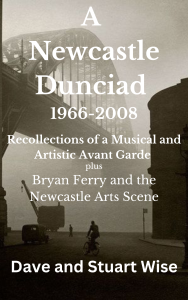

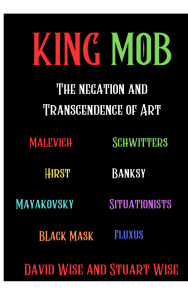
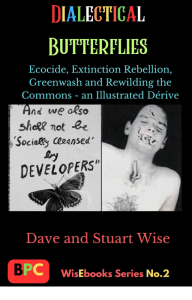
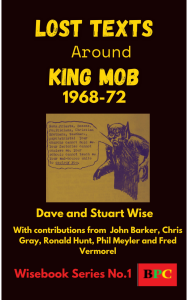
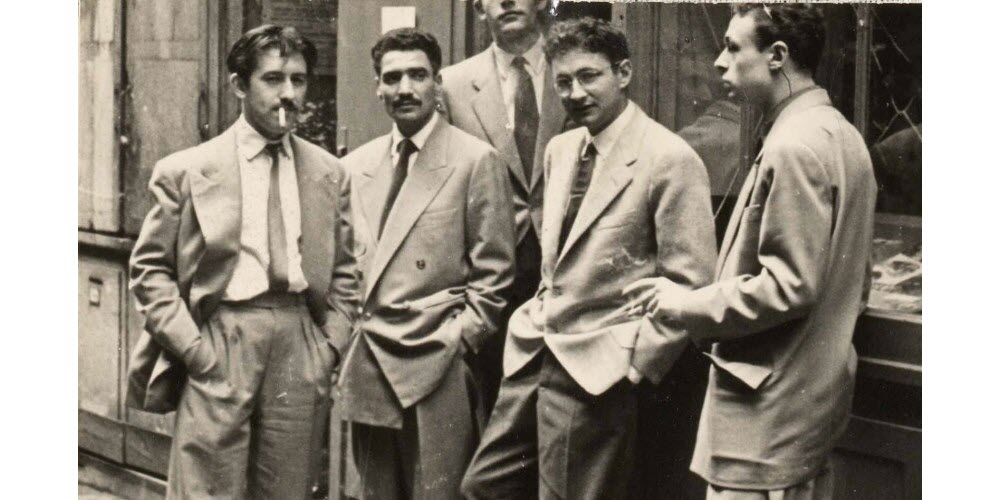
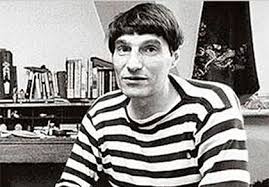
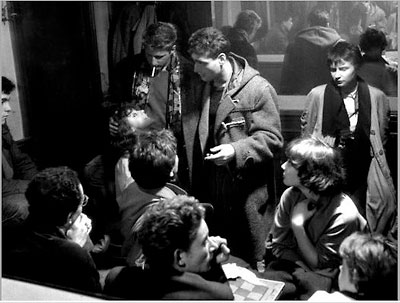
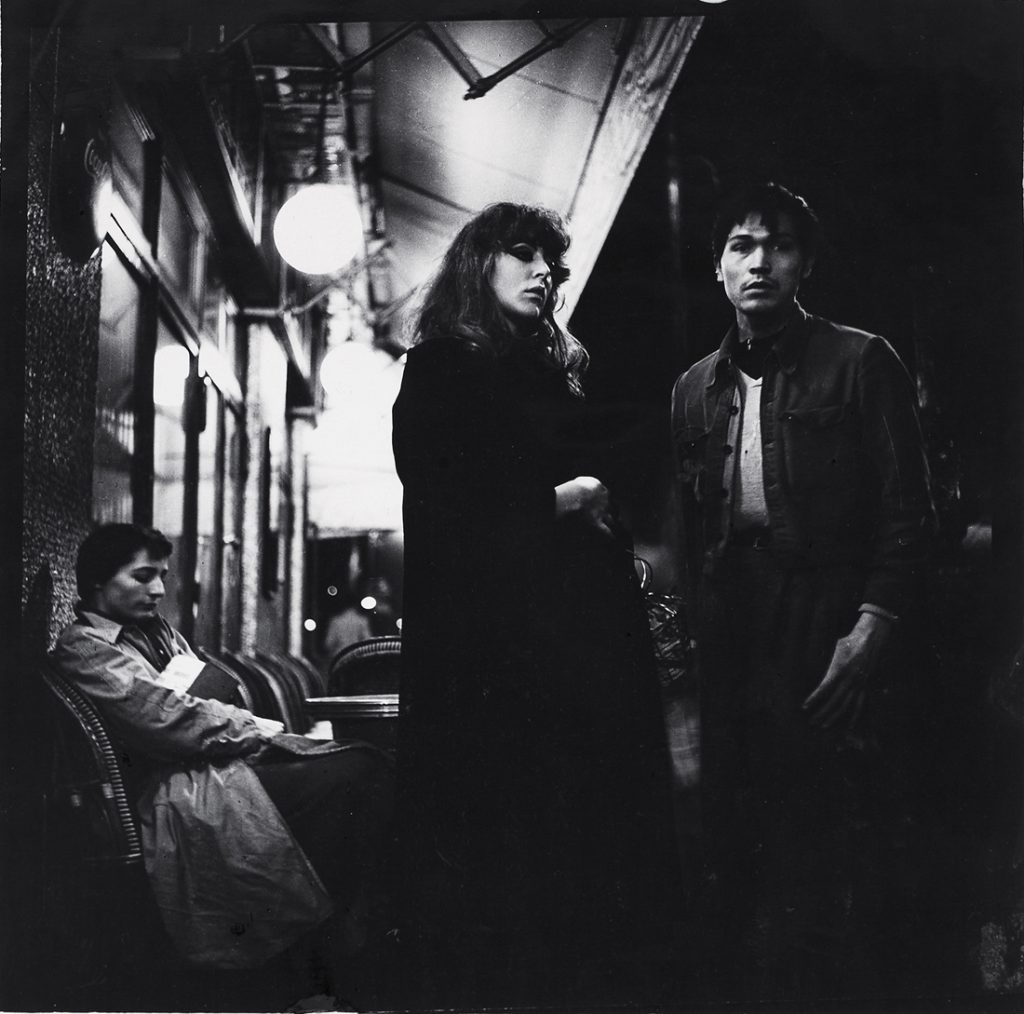
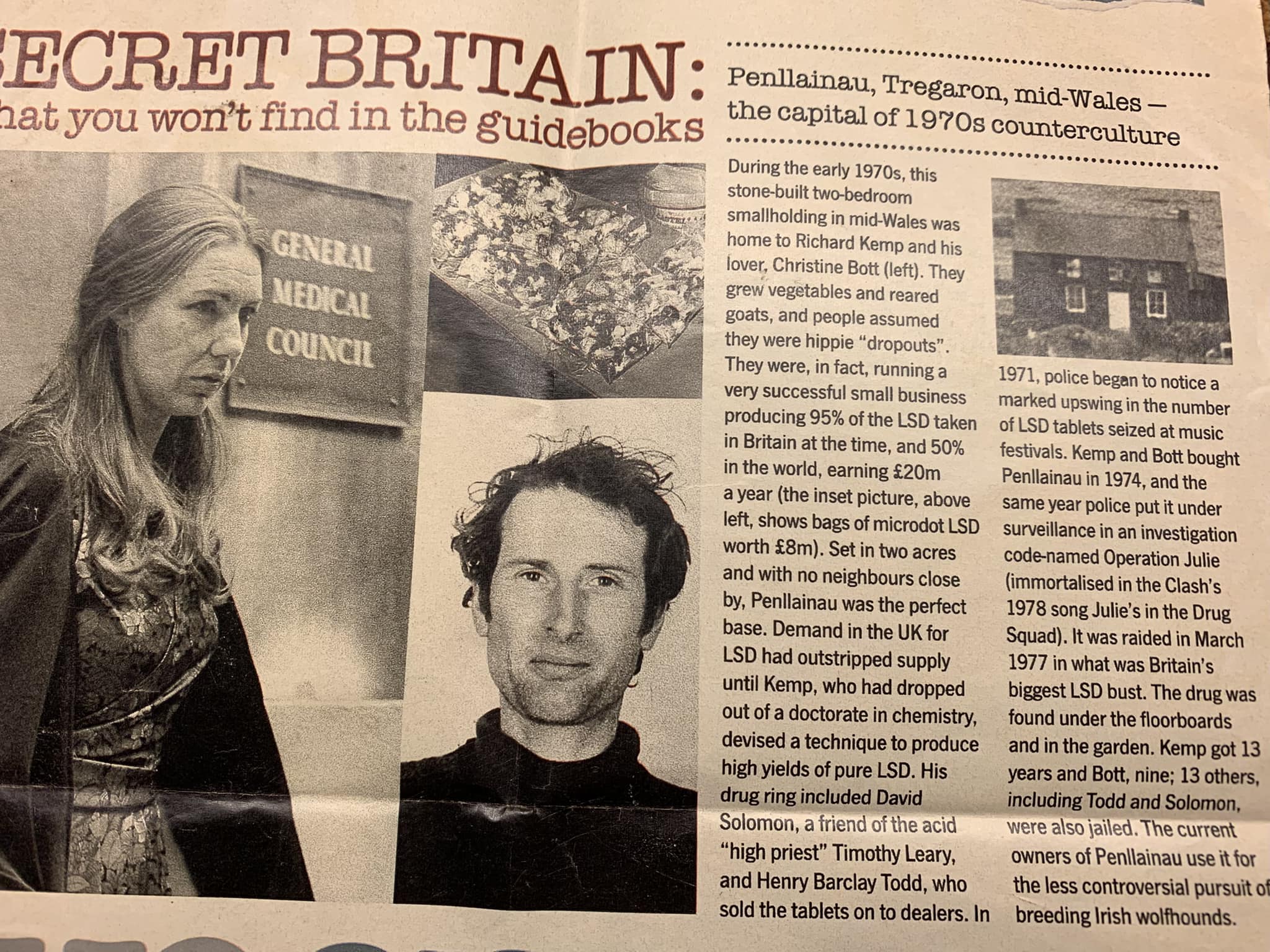
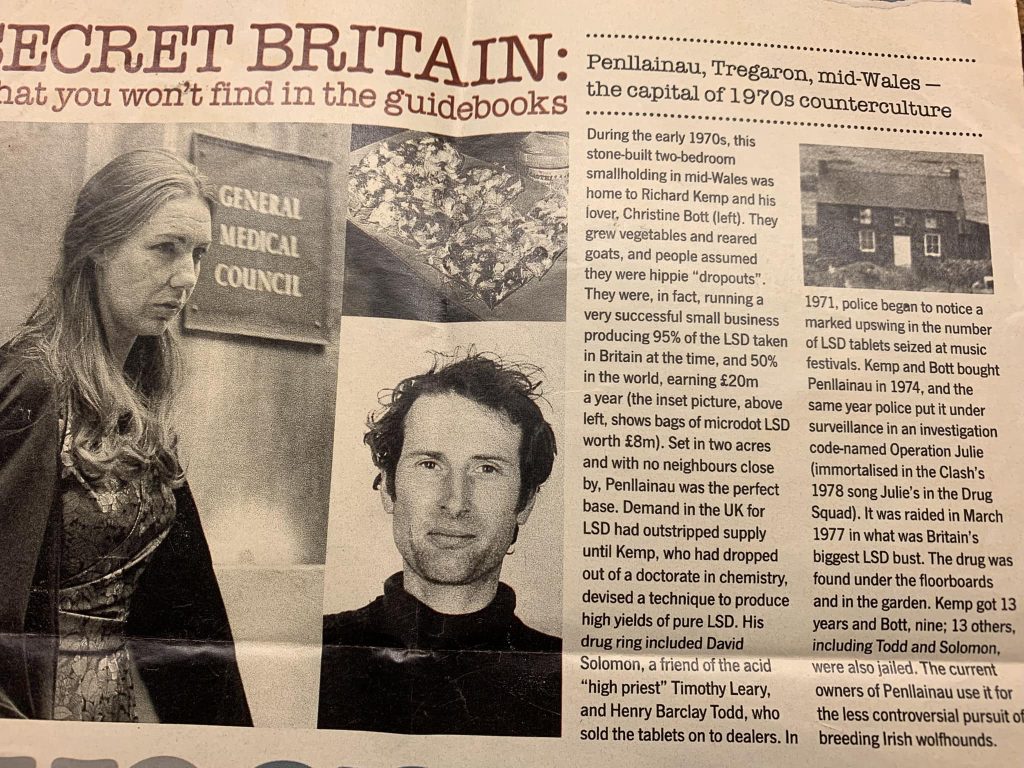
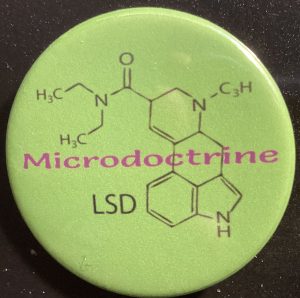

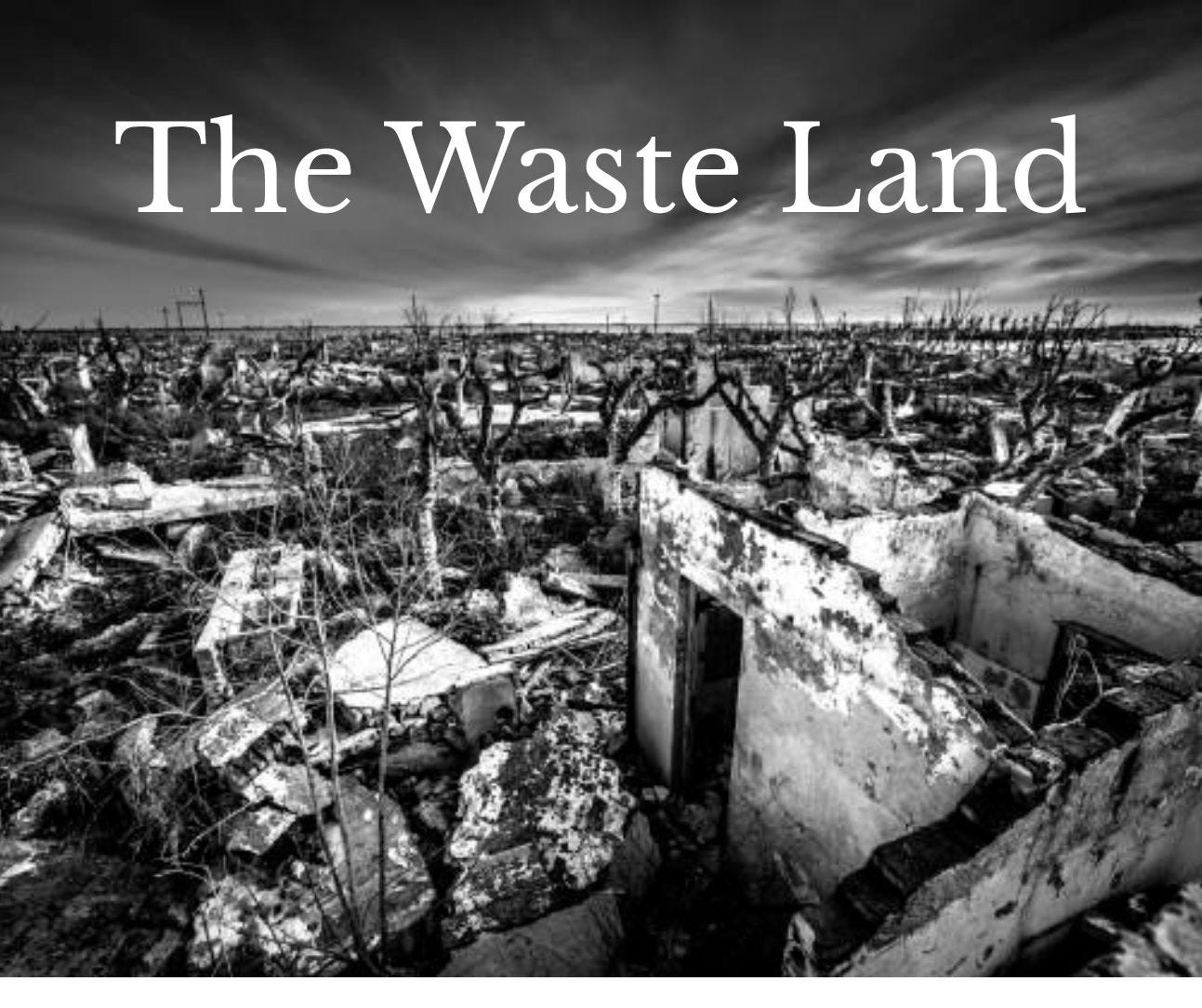



 A Newcastle Dunciad: Memories of Music and Recuperation, by Dave and Stuart Wise
A Newcastle Dunciad: Memories of Music and Recuperation, by Dave and Stuart Wise Building For Babylon: Construction, Collectives and Craic, by Dave and Stuart Wise
Building For Babylon: Construction, Collectives and Craic, by Dave and Stuart Wise 1839: the Chartist Insurrection, by David Black and Chris Ford, with an Introduction by John McDonnell M.P. (ebook facsimile of the paperback edition published by Unkant in 2012)
1839: the Chartist Insurrection, by David Black and Chris Ford, with an Introduction by John McDonnell M.P. (ebook facsimile of the paperback edition published by Unkant in 2012)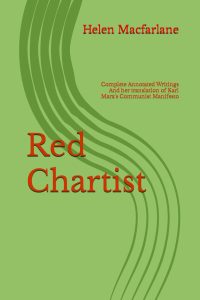 Red Chartist: Complete Annotated Writings, and her Translation of the Communist Manifesto, by Helen Macfarlane
Red Chartist: Complete Annotated Writings, and her Translation of the Communist Manifesto, by Helen Macfarlane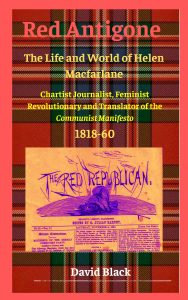 Red Antigone: The Life and World of Helen Macfarlane 1818-60, by David Black
Red Antigone: The Life and World of Helen Macfarlane 1818-60, by David Black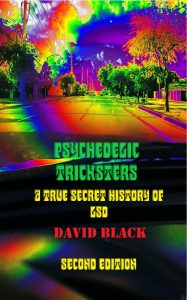 Psychedelic Tricksters: A True Secret History of LSD, by David Black
Psychedelic Tricksters: A True Secret History of LSD, by David Black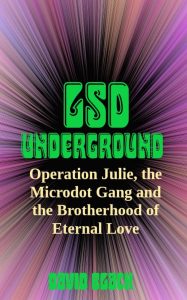 LSD Underground: Operation Julie, the Microdot Gang and the Brotherhood of Eternal Love, by David Black
LSD Underground: Operation Julie, the Microdot Gang and the Brotherhood of Eternal Love, by David Black





